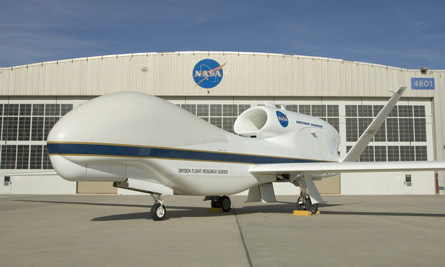A NASA-owned Northrop Grumman RQ-4 Global Hawk unmanned air vehicle will be modified to eject hundreds of dropsondes for hurricane research later this year.
NASA and the National Oceanic and Atmospheric Administration (NOAA) have teamed up to sponsor a series of flight tests on hurricanes in August and September.
The scientific flights will come after NASA completes a series of six ongoing flights in the Pacific ocean - dubbed GloPac - in which two RQ-4s are collecting climate and atmospheric data, including information about ozone depletion in the stratosphere.
 |
|---|
© Tony Landis/NASA |
The next series of flights is named the Genesis and Rapid Intensification Project (GRIP), says Paul Newman, a NASA project scientist for the GloPac mission.
While the US Air Force flies Lockheed Martin C-130 hurricane hunters into the eye of a hurricane, the NASA/NOAA mission intends to fly the aircraft directly over the storm. The team will carefully model updrafts in pre-flight simulations to ensure the Global Hawk does not encounter excessive turbulence, Newman says.
The UAV will be modified to carry hundreds of dropsondes that can be ejected from the aft end under the exhaust nozzle. "On a long-duration flight, a half-dozen [dropsondes] won't do," Newman says.
The dropsondes will fly through the storm and transmit data back to the Global Hawk using a radio link, he adds.
NASA acquired two RQ-4 Block 10 air vehicles from the USAF two years ago, allowing the agency to perform long-duration scientific flights in the stratosphere.
Source: Flight International























